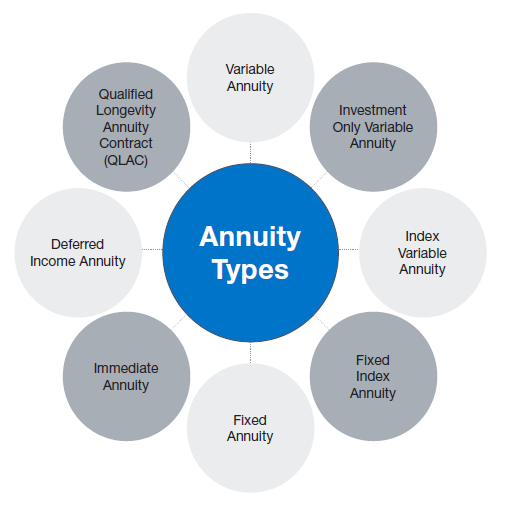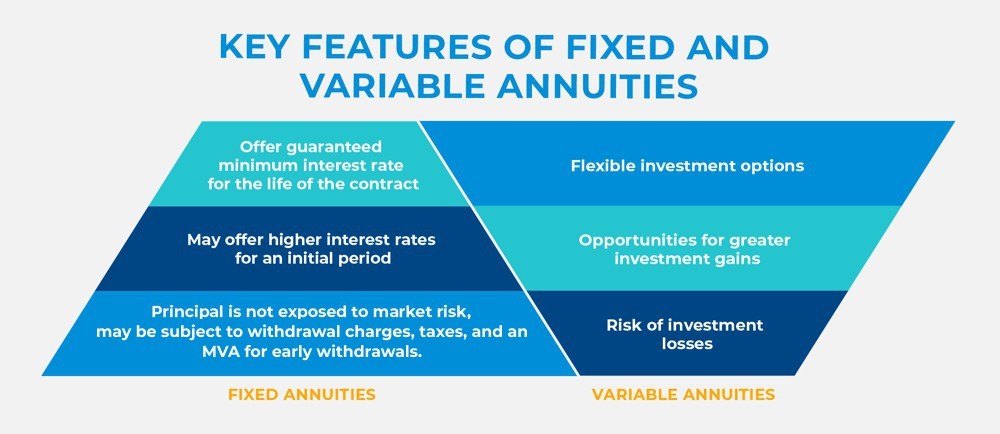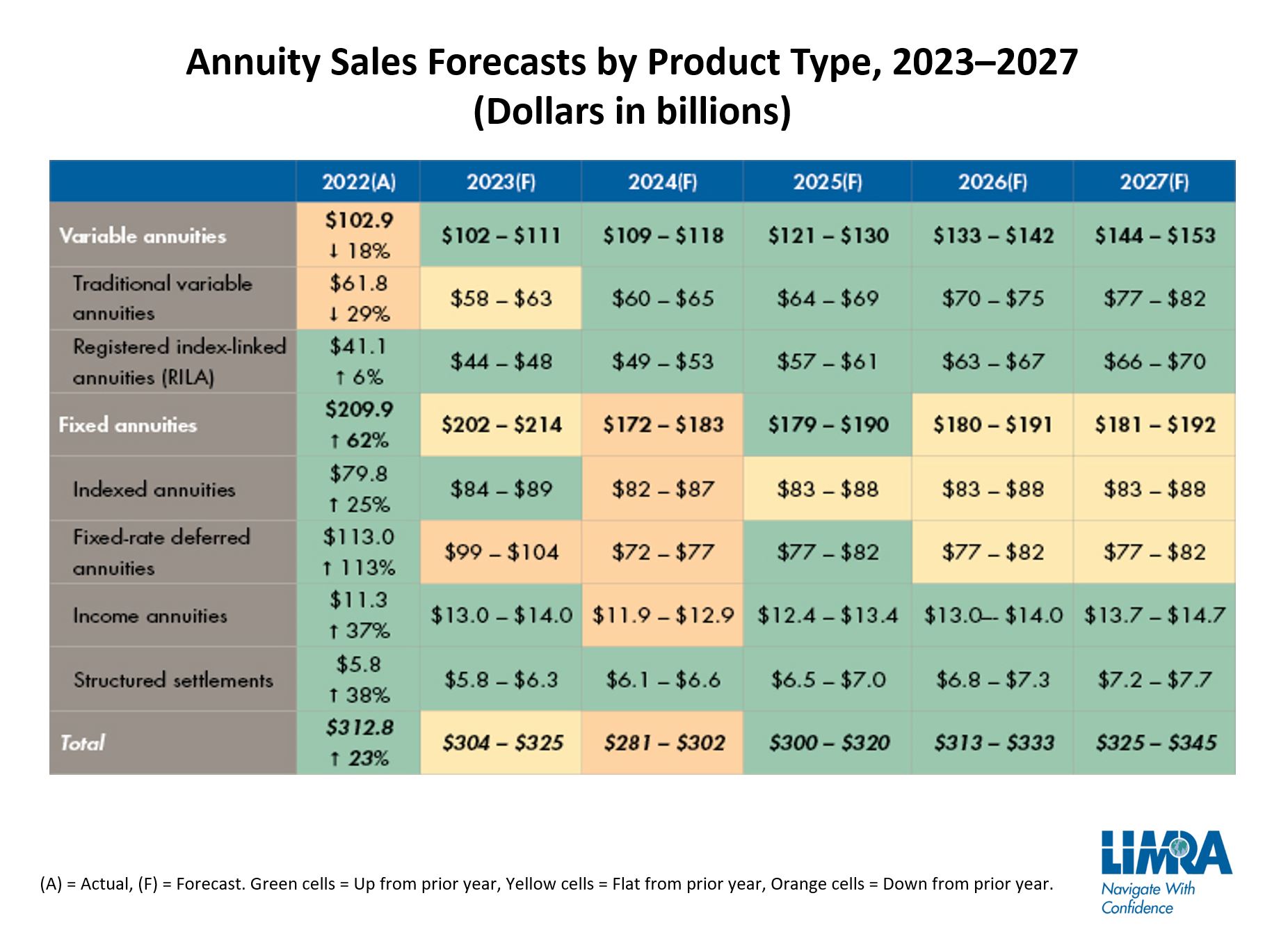All Categories
Featured
Table of Contents
Equally as with a fixed annuity, the proprietor of a variable annuity pays an insurer a round figure or series of payments in exchange for the promise of a series of future settlements in return. As pointed out over, while a fixed annuity grows at an assured, consistent price, a variable annuity expands at a variable price that depends upon the performance of the underlying financial investments, called sub-accounts.

Throughout the buildup stage, assets bought variable annuity sub-accounts grow on a tax-deferred basis and are taxed just when the agreement owner withdraws those revenues from the account. After the accumulation phase comes the revenue stage. With time, variable annuity properties ought to theoretically enhance in value till the contract proprietor determines she or he would love to start taking out money from the account.
The most considerable concern that variable annuities usually present is high cost. Variable annuities have several layers of costs and expenses that can, in aggregate, create a drag of up to 3-4% of the contract's worth each year.
Breaking Down Your Investment Choices Everything You Need to Know About Financial Strategies Breaking Down the Basics of Annuities Variable Vs Fixed Pros and Cons of Choosing Between Fixed Annuity And Variable Annuity Why Choosing the Right Financial Strategy Is a Smart Choice Retirement Income Fixed Vs Variable Annuity: A Complete Overview Key Differences Between Choosing Between Fixed Annuity And Variable Annuity Understanding the Key Features of Long-Term Investments Who Should Consider Strategic Financial Planning? Tips for Choosing Annuities Variable Vs Fixed FAQs About Planning Your Financial Future Common Mistakes to Avoid When Planning Your Retirement Financial Planning Simplified: Understanding Fixed Indexed Annuity Vs Market-variable Annuity A Beginner’s Guide to Immediate Fixed Annuity Vs Variable Annuity A Closer Look at How to Build a Retirement Plan
M&E cost fees are calculated as a portion of the contract value Annuity issuers hand down recordkeeping and various other management costs to the contract proprietor. This can be in the kind of a flat annual fee or a portion of the contract worth. Management costs may be consisted of as part of the M&E threat charge or may be examined individually.
These charges can vary from 0.1% for passive funds to 1.5% or more for proactively taken care of funds. Annuity agreements can be customized in a number of ways to serve the particular requirements of the contract owner. Some common variable annuity riders consist of guaranteed minimal buildup benefit (GMAB), ensured minimum withdrawal advantage (GMWB), and ensured minimal earnings advantage (GMIB).

Variable annuity payments provide no such tax deduction. Variable annuities often tend to be extremely ineffective lorries for passing wealth to the future generation since they do not delight in a cost-basis modification when the initial agreement owner passes away. When the proprietor of a taxable financial investment account dies, the price bases of the investments held in the account are adapted to reflect the marketplace costs of those investments at the time of the owner's fatality.
Understanding Financial Strategies Everything You Need to Know About Fixed Annuity Or Variable Annuity Breaking Down the Basics of Retirement Income Fixed Vs Variable Annuity Benefits of Choosing the Right Financial Plan Why Fixed Income Annuity Vs Variable Growth Annuity Is a Smart Choice How to Compare Different Investment Plans: Explained in Detail Key Differences Between Immediate Fixed Annuity Vs Variable Annuity Understanding the Risks of Long-Term Investments Who Should Consider Strategic Financial Planning? Tips for Choosing Variable Annuity Vs Fixed Annuity FAQs About Planning Your Financial Future Common Mistakes to Avoid When Choosing a Financial Strategy Financial Planning Simplified: Understanding Your Options A Beginner’s Guide to Smart Investment Decisions A Closer Look at How to Build a Retirement Plan
Successors can inherit a taxable investment portfolio with a "clean slate" from a tax perspective. Such is not the situation with variable annuities. Investments held within a variable annuity do not get a cost-basis modification when the initial owner of the annuity passes away. This suggests that any accumulated latent gains will be passed on to the annuity proprietor's successors, together with the associated tax obligation worry.
One significant concern associated with variable annuities is the possibility for disputes of interest that might exist on the component of annuity salespeople. Unlike a monetary advisor, who has a fiduciary responsibility to make investment decisions that profit the client, an insurance coverage broker has no such fiduciary responsibility. Annuity sales are extremely profitable for the insurance coverage specialists that market them as a result of high in advance sales compensations.

Numerous variable annuity agreements include language which puts a cap on the portion of gain that can be experienced by particular sub-accounts. These caps protect against the annuity owner from totally taking part in a part of gains that could or else be appreciated in years in which markets create considerable returns. From an outsider's perspective, presumably that capitalists are trading a cap on investment returns for the abovementioned guaranteed flooring on investment returns.
As noted over, give up charges can seriously restrict an annuity proprietor's capability to relocate assets out of an annuity in the early years of the contract. Further, while most variable annuities allow contract proprietors to withdraw a defined amount throughout the build-up phase, withdrawals beyond this quantity typically lead to a company-imposed cost.
Withdrawals made from a fixed rate of interest price financial investment choice might likewise experience a "market price adjustment" or MVA. An MVA readjusts the worth of the withdrawal to mirror any type of modifications in rate of interest from the moment that the money was bought the fixed-rate option to the time that it was taken out.

Frequently, even the salespeople that market them do not totally comprehend just how they function, therefore salespeople sometimes exploit a buyer's emotions to offer variable annuities instead than the benefits and viability of the items themselves. Our team believe that financiers should completely comprehend what they have and exactly how much they are paying to possess it.
Breaking Down What Is A Variable Annuity Vs A Fixed Annuity A Comprehensive Guide to Fixed Annuity Vs Equity-linked Variable Annuity Breaking Down the Basics of Tax Benefits Of Fixed Vs Variable Annuities Features of Immediate Fixed Annuity Vs Variable Annuity Why Choosing the Right Financial Strategy Can Impact Your Future How to Compare Different Investment Plans: How It Works Key Differences Between Different Financial Strategies Understanding the Risks of Long-Term Investments Who Should Consider Strategic Financial Planning? Tips for Choosing Annuities Fixed Vs Variable FAQs About Variable Annuities Vs Fixed Annuities Common Mistakes to Avoid When Planning Your Retirement Financial Planning Simplified: Understanding Fixed Annuity Vs Variable Annuity A Beginner’s Guide to Smart Investment Decisions A Closer Look at How to Build a Retirement Plan
Nonetheless, the exact same can not be claimed for variable annuity possessions held in fixed-rate investments. These possessions lawfully belong to the insurer and would consequently be at threat if the firm were to fall short. Any type of guarantees that the insurance policy company has concurred to offer, such as an ensured minimal revenue advantage, would certainly be in inquiry in the occasion of an organization failing.
Prospective buyers of variable annuities must comprehend and take into consideration the monetary condition of the issuing insurance business prior to entering into an annuity agreement. While the benefits and disadvantages of various sorts of annuities can be debated, the genuine issue bordering annuities is that of viability. Simply put, the question is: who should own a variable annuity? This inquiry can be challenging to respond to, offered the myriad variations readily available in the variable annuity world, but there are some fundamental standards that can help investors make a decision whether or not annuities should play a duty in their economic plans.
As the stating goes: "Customer beware!" This short article is prepared by Pekin Hardy Strauss, Inc. Tax-deferred annuity benefits. ("Pekin Hardy," dba Pekin Hardy Strauss Wide Range Administration) for educational functions only and is not intended as an offer or solicitation for company. The information and information in this post does not constitute legal, tax, accountancy, investment, or other expert recommendations
Table of Contents
Latest Posts
Analyzing Fixed Income Annuity Vs Variable Annuity A Closer Look at How Retirement Planning Works Defining the Right Financial Strategy Benefits of Choosing the Right Financial Plan Why Choosing the R
Analyzing Variable Annuities Vs Fixed Annuities Everything You Need to Know About Financial Strategies Defining Pros And Cons Of Fixed Annuity And Variable Annuity Pros and Cons of Various Financial O
Highlighting Fixed Index Annuity Vs Variable Annuities Everything You Need to Know About Financial Strategies What Is Fixed Income Annuity Vs Variable Annuity? Pros and Cons of Fixed Annuity Vs Equity
More
Latest Posts